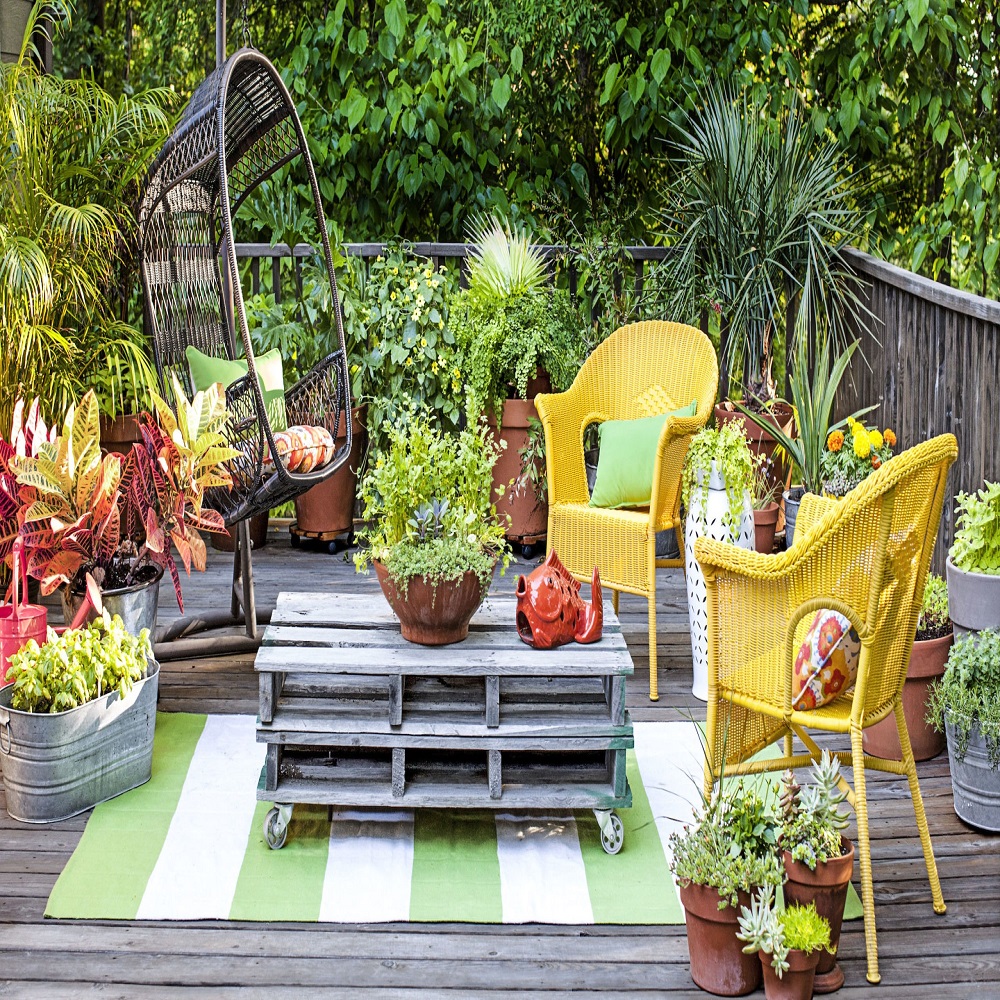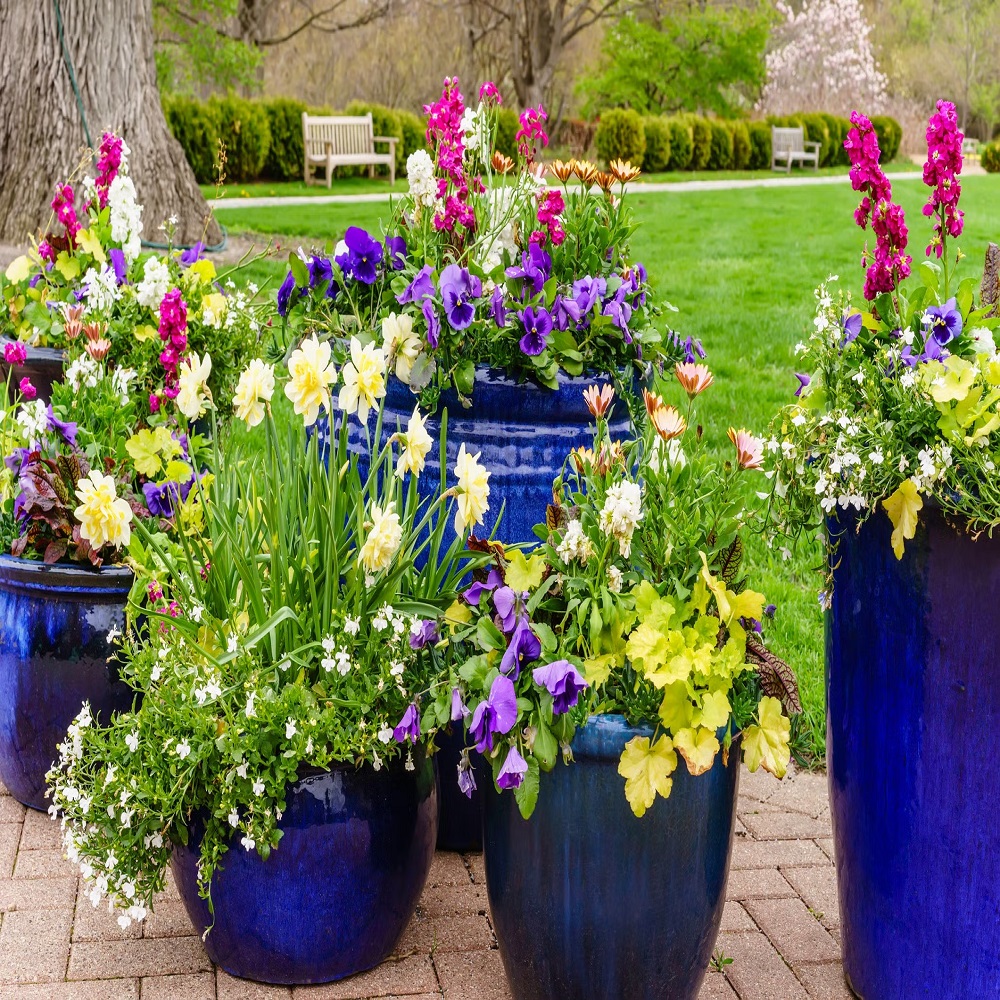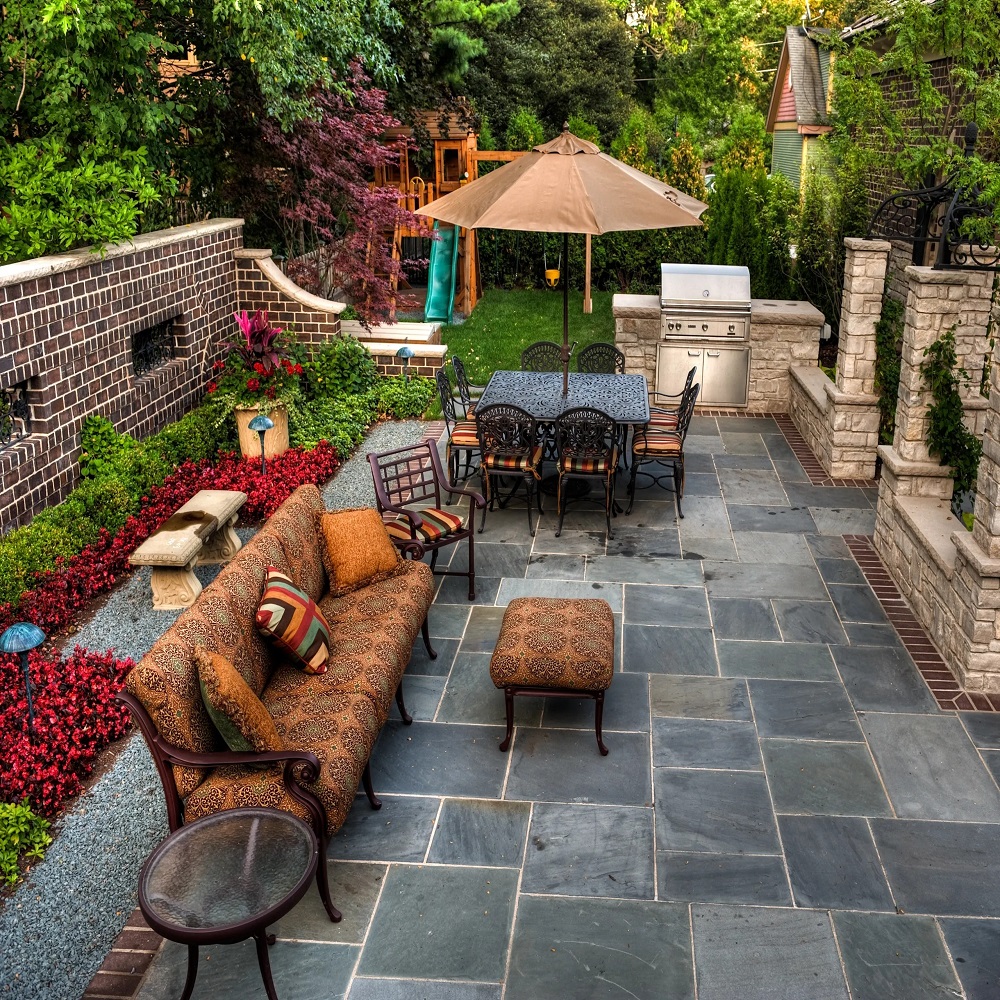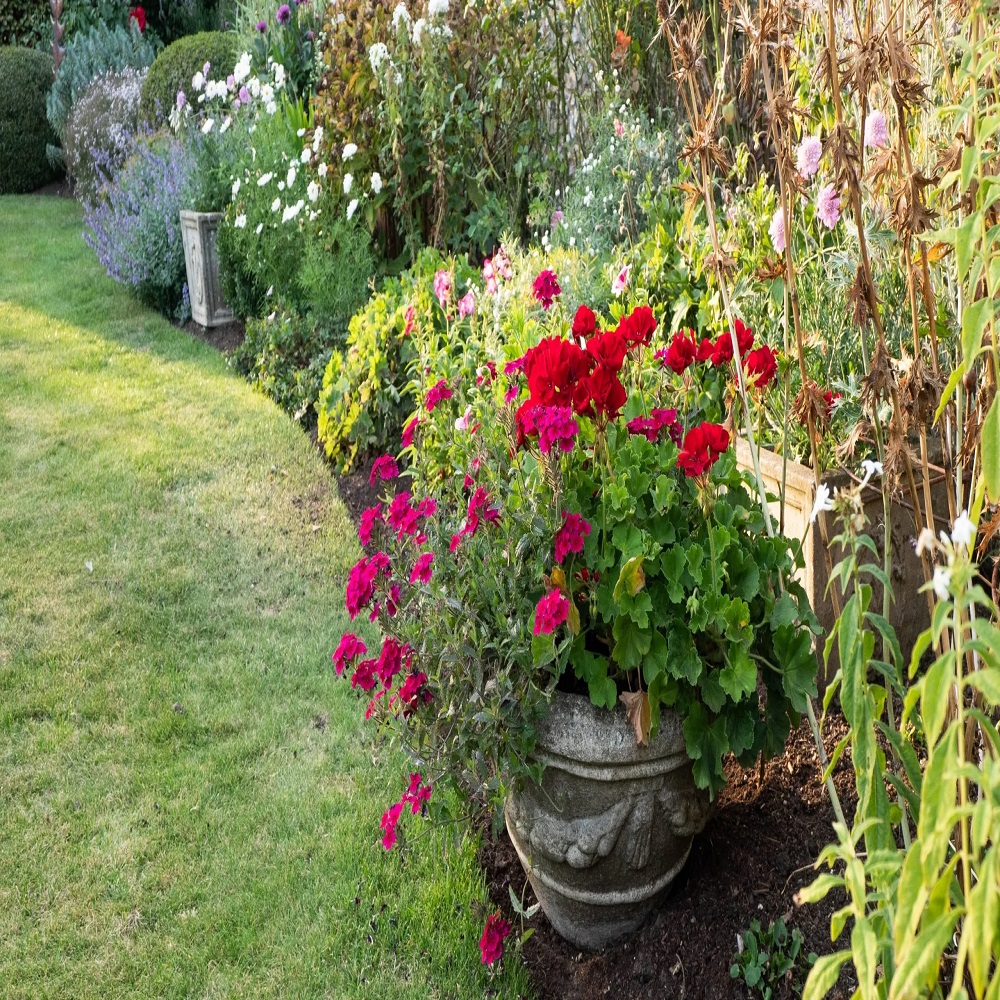Basics of Choosing the Right Flower Pots
Choosing the right flower pots is crucial. It influences plant health and garden aesthetics. Here, we discuss pot types and materials.
Types of Pots for Different Plants
Each plant has unique needs for its flower pot. Cacti favor shallow, wide pots. Deep-rooted plants need tall pots. Think about plant size and growth pattern before pot selection. Opt for larger pots for growing plants. Small, delicate plants work well in smaller pots.
The Importance of Pot Materials and Drainage
Pot materials impact plant maintenance. Terracotta pots wick away moisture and are heavy. Plastic pots are light and retain more water. Make sure pots have holes for drainage. Good drainage is vital. It prevents root rot and over-watering. For landscaping with flower pots, choose materials that match garden style and plant needs.

Innovative Pot Arrangement Ideas
When landscaping with flower pots, creative arrangement is key. Beyond placing pots haphazardly, thoughtful positioning can transform the feel of a garden.
Creating Height and Depth
To add visual interest to your garden, create layers of height and depth with flower pots. Here’s how:
- Start with larger pots in the back, gradually transitioning to smaller pots up front.
- Mix and match pot heights to guide the eye along the landscape.
- Use plant stands or hang pots at different levels above the ground.
- Combine plants of varying heights within the pots themselves.
These strategies establish a dynamic arrangement, leading to a more engaging outdoor space.
Using Symmetry and Asymmetry
Balance plays a crucial role in pot arrangement. Consider these tips:
- Symmetry: Position identical pots on either side of a garden path for a formal look.
- Asymmetry: Use an odd number of pots and place them in a more natural, uneven pattern.
By alternating between symmetry and asymmetry, you can create a rhythm in your garden that feels both planned and organic. Remember, the key is to complement the garden’s existing design while showcasing your personal style.
Color Coordination with Flower Pots
Color plays a pivotal role in landscaping with flower pots. It can tie a space together or create a striking contrast. Use color theory to pair pots skillfully with their surroundings. Choose a color palette that complements the garden’s overall design. Here’s how to approach color coordination with flower pots.
Matching Pots with Outdoor Furniture
Coordinating your flower pots with outdoor furniture enhances the cohesion of your garden space. Follow these simple tips:
- Select pot colors that echo the hues of your patio set or outdoor cushions.
- For a unified look, match the pot color to the dominant color in your outdoor rug or throw pillows.
- If your furniture is neutral, choose bold pot colors to add pops of interest.
These color coordination tips will help create a seamless transition from the furniture to the garden.

Seasonal Color Schemes
Seasonal color schemes with flower pots can reflect the changing moods of the year. Here’s how to keep your garden in tune with the seasons:
- Spring: Use pastel pots and spring-blooming flowers to capture the fresh essence of the season.
- Summer: Bright, saturated pot colors can celebrate the vibrant energy of summer.
- Fall: Choose pots in warm, earthy tones to complement fall foliage.
- Winter: Use pots with cool blues, whites, or metallic finishes for a crisp winter feel.
By adjusting pot colors with the seasons, you ensure your garden stays dynamic and interesting all year round.
Incorporating Different Plant Species
When planning to landscape with flower pots, the choice of plant species is crucial. Different plants can bring unique textures, heights, and colors to your garden layout. From the vibrant tones of annuals to the enduring beauty of perennials, each type of plant serves a different purpose and thrives under different conditions. Here’s how best to choose and incorporate plant species into your pot landscaping.
Best Flowers for Pot Landscaping
Choosing the right flowers for pot landscaping involves assessing the visual impact and the plants’ care needs. Consider these popular options:
- Petunias: Offer a wide range of colors and are perfect for sunny spots.
- Geraniums: Resilient and add vibrant color with minimal care.
- Begonias: Ideal for shaded areas, providing rich colors and full blossoms.
- Marigolds: Easy to care for, pest-resistant, and great for adding pops of gold or orange.
These flowers can help create stunning visuals while being practical choices due to their adaptability and maintenance levels.
Incorporating Perennials and Annuals
Mixing perennials and annuals in flower pots is a fantastic strategy for maintaining year-round interest in your garden:
- Perennials: These plants last multiple years and help form the backbone of your pot arrangements. Peonies, lavender, and hostas are excellent choices.
- Annuals: These plants live for one season but are star performers in color and bloom volume. Incorporate annuals like impatiens and zinnias for a splash of seasonal color.
Using both types of plants allows you to establish a stable structure with perennials while keeping the garden fresh and vibrant with annuals. Remember, successful pot gardening also depends on understanding the specific needs of each plant, including sunlight, watering, and soil preference.

Creative DIY Flower Pot Projects
Taking ‘landscaping with flower pots’ to the next level involves adding a touch of personal creativity. DIY projects can breathe new life into your garden space, making it not only beautiful but also unique. One of the joys of DIY is that you can customize each project to your taste and the aesthetic of your outdoor space. Here we’ll explore some inventive ways to craft your own flower pots.
Upcycling Items into Unique Flower Pots
Upcycling is a sustainable and creative way to use items that you might otherwise throw away. Transform everyday objects into stylish flower pots with these ideas:
- Old boots or shoes can become quirky planters, perfect for succulents.
- An unused teapot or kettle can house a charming herb garden.
- Wooden crates give a rustic vibe and can be stacked for vertical plant displays.
These upcycling ideas not only save money but also give your pots a unique twist that reflects your personality.
Making Mosaic Tiled Pots
For those who love a splash of color and pattern, making mosaic tiled pots is a wonderful project. Here’s a simple guide to get started:
- Choose broken tiles or plates in colors you love.
- Use a safe adhesive to attach pieces to a plain pot in a design you prefer.
- Grout the mosaic to ensure the pieces stay in place and to complete the look.
Mosaic pots are a fantastic way to add vibrancy to your garden and can be a fun weekend activity. These handcrafted pots can also make exceptional gifts or statement pieces for your patio or balcony.
Maintenance Tips for Potted Plant Landscapes
To keep your potted plants thriving, regular maintenance is key. Healthy plants enhance your landscape’s beauty. Here’s how to maintain potted plant landscapes effectively.
Regular Care and Watering Techniques
Water plays a vital role in plant health. Wrong watering can harm plants. Follow these tips:
- Check soil moisture before watering; it should be dry an inch below the surface.
- Use a watering can or hose with a gentle spray.
- Water in the morning to reduce evaporation and fungal growth.
- Ensure the pots have proper drainage to avoid waterlogging.
Regular care also includes removing dead leaves and debris. This prevents pests and diseases. Wipe the leaves with a damp cloth to remove dust.
Seasonal Adjustments and Fertilizing
Plants’ needs change with the seasons. Adjust care accordingly. Here’s what to remember:
- Reduce watering in cooler months when plant growth slows.
- Shield plants from frost by bringing them indoors or covering them.
- Use the right fertilizer for growth spurts, often in spring and summer.
- Follow fertilizer instructions carefully to avoid overfeeding.
By following these maintenance tips, you can ensure that your landscaping with flower pots remains vibrant and appealing throughout the year.
Using Pots to Create Functional Spaces
Pots for Privacy or Boundaries
Flower pots can serve more than just decorative purposes. In landscaping with flower pots, you can cleverly use them to create privacy or define boundaries in your garden. Here’s how to optimize pots for these functions:
- Use tall and dense plants like bamboo in sturdy, oversized pots to form natural screen dividers.
- Arrange a series of pots close together to act as a partition or to edge a patio or walkway.
- Consider the pot material and plant type based on the amount of privacy and the visual aesthetics you want to achieve.
By strategically placing these pots, you can maintain privacy while adding greenery to your space.
Creating a Focal Point in Your Garden
A well-placed pot can become the centerpiece of your outdoor space. Here are some tips to make a flower pot a stunning focal point:
- Choose a large, decorative pot that stands out in terms of color and design.
- Plant a striking flower or plant that draws attention; vibrant flowers or tall ornamental grasses work well.
- Position the pot in a visible spot, like at the end of a pathway or in the center of a lawn.
With these pointers, flower pots not only enhance the beauty of your garden but also give it a functional structure and style.
